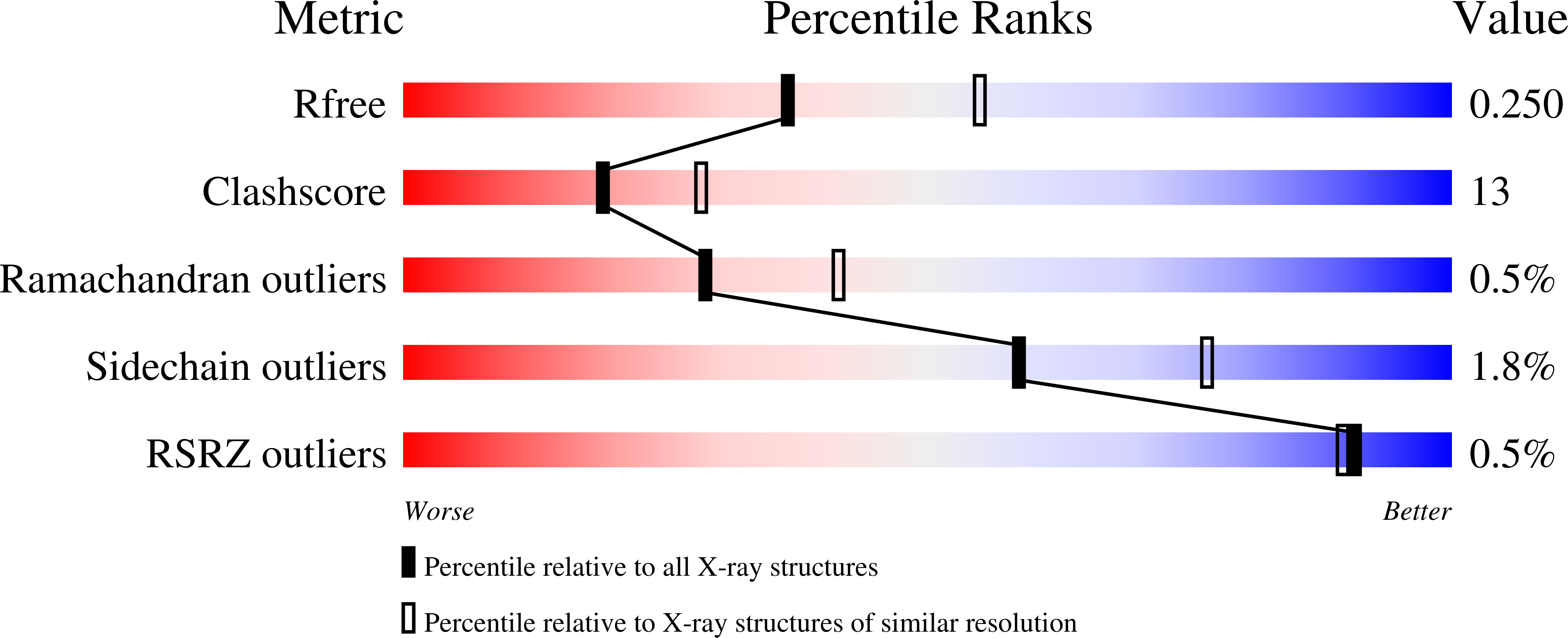The Receptor Binding Protein P2 of PRD1, a Virus Targeting Antibiotic-Resistant Bacteria, Has a Novel Fold Suggesting Multiple Functions.
Xu, L., Benson, S.D., Butcher, S.J., Bamford, D.H., Burnett, R.M.(2003) Structure 11: 309-322
- PubMed: 12623018
- DOI: https://doi.org/10.1016/s0969-2126(03)00023-6
- Primary Citation of Related Structures:
1N7U, 1N7V - PubMed Abstract:
Bacteriophage PRD1 is unusual, with an internal lipid membrane, but has striking resemblances to adenovirus that include receptor binding spikes. The PRD1 vertex complex contains P2, a 590 residue monomer that binds to receptors on antibiotic-resistant strains of E. coli and so is the functional counterpart to adenovirus fiber. P2 structures from two crystal forms, at 2.2 and 2.4 A resolution, reveal an elongated club-shaped molecule with a novel beta propeller "head" showing pseudo-6-fold symmetry. An extended loop with another novel fold forms a long "tail" containing a protruding proline-rich "fin." The head and fin structures are well suited to recognition and attachment, and the tail is likely to trigger the processes of vertex disassembly, membrane tube formation, and subsequent DNA injection.
Organizational Affiliation:
The Wistar Institute, 3601 Spruce Street, Philadelphia, PA 19104, USA.
















